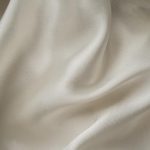Are you searching for the most breathable fabric to keep you cool and comfortable? Look no further than linen. With its unique composition and properties, linen is known for its exceptional breathability.
In this article, we will delve into the science behind linen’s breathability, compare it to other natural fabrics, and explore the benefits of choosing linen. Additionally, we will discuss factors that can affect linen’s breathability and provide tips on maximizing its cooling properties.
So, let’s find out if linen truly is the most breathable fabric for all your needs.
Table of Contents
The Science Behind Breathability
If you’re wondering why linen is considered the most breathable fabric, let’s dive into the science behind it.
Breathability in different clothing materials is determined by their ability to allow air and moisture to pass through the fabric. The impact of fabric composition on breathability is significant.
Linen, made from the flax plant, has long been praised for its breathability. The structure of linen fibers is naturally porous, allowing for better air circulation. This porous nature creates gaps between the fibers, which aids in the movement of air and moisture.
Additionally, linen has a high moisture absorption rate, which means it can absorb and release moisture quickly. This helps to keep the body cool and dry, even in hot and humid conditions.
Furthermore, linen has a lower thread count compared to other fabrics, which also contributes to its breathability. The looser weave allows for more air to flow through the fabric, promoting better ventilation.
Overall, the combination of linen’s porous fibers, moisture-absorbing properties, and loose weave make it the most breathable fabric choice.
Understanding Linen: Composition and Properties
To understand the composition and properties of linen, you should explore its unique characteristics and how it differs from other fabrics.
Linen is derived from the flax plant, and its fibers are known for their strength and durability. The composition breakdown of linen consists of cellulose, which makes up the majority of its composition. This cellulose structure contributes to linen’s ability to absorb moisture and release it quickly, making it a highly breathable fabric.
Linen also has excellent heat conductivity, allowing it to cool the body by dissipating heat. Additionally, linen is known for its anti-static properties and resistance to dirt and stains. It is a lightweight fabric that drapes well and has a natural luster.
Linen can also withstand high temperatures, making it suitable for warm climates. Understanding these properties of linen can help you make an informed decision when choosing fabrics for different purposes, such as clothing, bedding, or upholstery.
Comparing Linen to Other Natural Fabrics
When comparing linen to other natural fabrics, you’ll find that it offers unique characteristics and benefits that set it apart.
Let’s start with linen vs cotton. Linen is made from the flax plant, while cotton comes from the cotton plant. Linen is known for its exceptional breathability, which makes it perfect for warm weather. It allows air to circulate freely, keeping you cool and comfortable.
Cotton, on the other hand, is also breathable but not as much as linen. It tends to trap heat and moisture, which can make you feel sticky and sweaty in hot conditions.
Now, let’s compare linen to wool. Wool is known for its warmth and insulation properties, making it suitable for colder climates. However, it doesn’t offer the same breathability as linen. Wool can make you feel hot and itchy, especially when worn directly against the skin.
Linen, on the other hand, is lightweight and breathable, making it ideal for both warm and cool weather. It absorbs moisture quickly and dries fast, keeping you dry and comfortable throughout the day.
The Benefits of Linen’s Breathability
Linen’s exceptional breathability allows for optimal air circulation, keeping you cool and comfortable in any weather. When it comes to hot weather, linen is the ultimate fabric choice. Its natural fibers have an open weave, allowing heat and moisture to escape from your body. This means that even on the hottest days, you won’t feel sticky or suffocated in linen clothing.
One of the main benefits of linen in hot weather is its moisture-wicking properties. The fabric absorbs moisture from your body and quickly releases it into the air, keeping you dry and sweat-free. This prevents any discomfort or irritation that can come from being drenched in perspiration.
Additionally, linen’s breathability helps regulate your body temperature. It allows air to flow freely, creating a cooling effect on your skin. This is especially important during scorching summer days when the heat can be unbearable. Linen acts like a natural air conditioner, keeping you refreshed and cool.
Furthermore, linen’s lightweight and airy nature make it the perfect choice for hot weather. It doesn’t stick to your skin like other fabrics, allowing for better air circulation and ventilation. This makes linen garments feel light and breezy, giving you a sense of freedom and comfort.
Factors Affecting Linen’s Breathability
Factors like humidity and the tightness of the weave can impact how well linen allows air to circulate, affecting its breathability. Understanding these factors can help you improve the breathability of your linen garments.
Here are three key factors that affect linen’s breathability:
-
Humidity levels: High humidity can make linen feel less breathable as moisture in the air gets trapped in the fabric. To improve breathability, try wearing linen in drier climates or use a dehumidifier to reduce moisture in the air.
-
Weave tightness: The tightness of the weave can affect how easily air can flow through the fabric. Linen with a looser weave allows for better air circulation and increased breathability. Look for linen garments with an open weave or opt for linen blends that incorporate more breathable fibers.
-
Fabric weight: The weight of the linen fabric also plays a role in its breathability. Lighter weight linen fabrics tend to be more breathable than heavier ones. When choosing linen garments, consider opting for lighter weight options for better airflow and improved breathability.
Tips for Maximizing Linen’s Breathability
When it comes to comparing linen with other fabrics, there are a few key points to consider.
Linen is known for its natural breathability, which sets it apart from other materials.
However, it does require some specialized care practices to maintain its quality and longevity.
Linen Vs. Other Fabrics
If you’re comparing linen to other fabrics, you’ll find that it is one of the most breathable options available. Linen’s natural fibers allow for better air circulation, making it ideal for hot and humid climates.
Here’s how linen stacks up against cotton and silk:
-
Linen vs. Cotton: While both fabrics are breathable, linen has a slight edge. Linen fibers are hollow, allowing them to absorb moisture and quickly release it into the air, keeping you cool and dry. Cotton, on the other hand, can retain moisture, making it feel damp and less breathable in humid conditions.
-
Linen vs. Silk: Silk is known for its luxurious feel, but when it comes to breathability, linen takes the lead. Silk fibers are tightly woven, limiting airflow and making it less breathable than linen. Linen’s loose weave and natural fibers allow for better air circulation, keeping you comfortable even in warm temperatures.
Best Linen Care Practices?
To keep linen in its best condition, it’s important to follow these care practices.
First, always check the care label for specific instructions. Most linen can be machine washed on a gentle cycle using mild detergent. Avoid using bleach or fabric softeners, as they can weaken the fibers.
When drying, air-drying is best to prevent shrinkage, but if you must use a dryer, use a low heat setting. Ironing linen while it’s still slightly damp will result in a smoother finish. However, be sure to use a low to medium heat setting to avoid scorching the fabric.
Lastly, store linen in a cool, dry place to prevent mildew or moisture damage. Common linen care mistakes include using hot water, high dryer heat, and not properly storing the fabric.
Linen Vs. Synthetic Fabrics: Which Is More Breathable?
You’ll find that linen is more breathable than synthetic fabrics. When it comes to comparing linen with cotton and polyester, linen comes out on top in terms of breathability. Here are three reasons why:
-
Natural fibers: Linen is made from flax plant fibers, which are natural and allow for better air circulation. Cotton, another natural fiber, is also breathable, but linen has a distinct advantage due to its looser weave.
-
Moisture-wicking properties: Linen has excellent moisture-wicking properties, meaning it can absorb and release moisture quickly. This helps to keep you cool and dry, especially in hot and humid conditions. Polyester, on the other hand, is a synthetic fabric that tends to trap moisture, making it less breathable.
-
Lightweight and loose weave: Linen is lightweight and has a looser weave compared to cotton and polyester. This allows for better airflow, keeping you feeling fresh and comfortable. Cotton is also breathable, but its weave is usually tighter, reducing its breathability compared to linen.
Conclusion
In conclusion, linen is indeed one of the most breathable fabrics available. Its composition and properties, as well as its ability to absorb moisture and allow air to flow through, make it an ideal choice for hot weather or humid climates.
Compared to other natural fabrics, linen stands out for its superior breathability. Factors such as thread count, weave, and finishing also play a role in linen’s breathability.
By following some simple tips, you can maximize the breathability of your linen garments.
In comparison to synthetic fabrics, linen still reigns supreme in terms of breathability.
- The Difference Between “Crepe” and “Crape” Fabric Explained - June 23, 2025
- Crepe Fabric Glossary: 20 Terms Every Sewist and Designer Should Know - June 23, 2025
- Is Crepe Fabric Stretchy? A Guide to Woven vs. Knit Crepe - June 23, 2025






